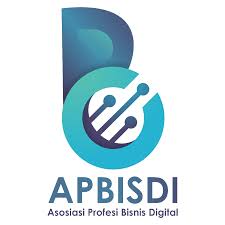Redesign of Residential Catalogue Websites with a Personal Extreme Programming Approach to Improve User Experience Satisfaction (Case Study: PT CBS Land Indonesia)
Keywords:
Catalog Website, Personal Extreme Programming, SUS, Property, Home Ownership CreditAbstract
The property business always attracts the attention of many people, encouraging business people to compete to improve their business. One way is to use technology as an effective promotional tool to develop a business. This research involves the creation of a catalog-based website promotion system that assists PT. CBS Land Indonesia in promoting its business. The existence of this promotion system can ease the company's efforts in promoting properties to potential customers in an integrated manner. This system uses the CodeIgniter framework and employs the Personal Extreme Programming (PXP) method for website development, while website testing is conducted using black box testing and website testing is done using blackbox testing with the aim of knowing user satisfaction which is measured by increasing using SUS indicators. During Blackbox testing, the functionality of the housing catalog website is evaluated to ensure it meets user expectations. Meanwhile, the measurement of user satisfaction improvement is conducted by providing a questionnaire with SUS indicators to website users before the redesign is carried out. The result of this research is a catalog website design with various new features that PT. CBS Land Indonesia can use to reach a broader market. In conclusion, this research develops a catalog-based website promotion system for PT. CBS Land Indonesia, aimed at facilitating property promotion to potential customers. This system is built using the CodeIgniter framework and the Personal Extreme Programming (PXP) method, and a questionnaire with the System Usability Scale (SUS) indicator is used to measure the extent to which user experience satisfaction has increased.
Downloads
References
A. Bangor, P. Kortum, and J. M. (2009). Determining What Individual SUS Scores Mean: Adding an Adjective Rating Scale. J. Usability Studies, 4(3), 114–123.
Abdulloh, R. (2015). web programming is easy. PT. Elex MediaKomputindo.
Adoe, A. (2023). UI/ux design of a website-based hospital patient registration application with the design thinking method. Satin - Science and Information Technology,. 9(2), 125-133.
Al-Faruq, M. N. M., Nur'aini, S., & Aufan, M. H. (2022). UI/UX design of Semarang Virtual Tourism with Figma. Walisongo Journal of Information Technology, 4(1), 43–52. https://doi.org/10.21580/wjit.2022.4.1.12079
Anhar. (2010). PHP and MySQL Self-Teaching. PT. Trans Media.
Ependi, U., Kurniawan, T. B., & Panjaitan, F. (2019). System Usability Scale Vs Heuristic Evaluation: a Review. Symmetric: Journal of Mechanical Engineering, Electrical and Computer Science, 10(1), 65–74. https://doi.org/10.24176/simet.v10i1.2725
Ichsanudin, M.N. and Yusuf, M. (2022). Library with the Black Box Testing method for beginners. Sec. 1(2), 1–8.
Laudon, K. C., & Laudon, J. P. (2004). M. information systems: M. the digital firm. P. E. (2003). Management information systems: managing the digital firm. In Revista de Administração Contemporânea (Vol. 7, Issue 1). https://doi.org/10.1590/s1415-65552003000100014
Luplhy, A. (2015). What is Bootsrap. https://www.academia.edu/6204469/Apa_itu_Bootstrap
Mulyana, U. & D. G. (2016). Design of a Web-Based Mobile Phone Seller Information System at the Ilham Cellular Jakarta Store. 8(2).
Permana, A. Y., & Romadlon, P. (2019). The design of the housing sales information system uses the SDLC method at PT. Mandiri Land Prosperous is mobile-based. Journal of Technology Lamp Bangsa, 84(10), pp. 1511–1518.
Rafin, A. (2013). The design of a Web-Based Housing Information System at PT. Cipta Jaya Inhil. 2(4), 49–59.
Rangkuti, F. (2009). Creative Promotion Strategies and Case Analysis of Integrated Marketing Communication. PT. Gramedia Pustaka Utama.
Rizky, S. (2011). Basic concepts of software engineering. Library Achievements.
Saputra, D., Ardiyan Syah, E., & Darnis, F. (2022). Usability Testing on the Symphonic Website using the System Usability Scale (SUS). Synchronization, 7(4), 2584–2592. https://doi.org/10.33395/sinkron.v7i4.11916
Sembodo, F. G., Fitriana, G. F., & Prasetyo, N. A. (2021). Evaluation of the usability of the Shopee website using the System Usability Scale (SUS). Journal of Applied Informatics and Computing, 5(2), 146–150. https://doi.org/10.30871/jaic.v5i2.3293
Sugiyono. (2009). Quantitative, Qualitative, and R&D Research Methods. Alphabet.
Sweetania, R. N. F. and D. (n.d.). DESIGN PROTOTYPE UI/UX DESIGN OF RESTAURANT RESERVATION APPLICATION USING THE DESIGN THINKING METHOD. JUIT, 2(2).
Thobby Wakarmamu. (2022). "Qualitative Research Methods,." Eureka Media Script.
Ticoalu, G. B., Musdar, I. A., & Munir S., A. (2023). Evaluation and improvement of UI/UX website invitees using the Human Centered Design method. CHARISMA Tech, 18(1), 55–69. https://doi.org/10.55645/kharismatech.v18i1.287
Yusuf, M., Rachmadi, A., & Rokhmawati, R. I. (2018). Evaluation of the user interface design of the Blitar Regency website using the Usability Testing method (Study on the Blitar Regency Government Office). Journal of Information Technology and Computer Science Development, 2(7), 2494–2503
Downloads
Published
How to Cite
Issue
Section
License
Copyright (c) 2025 Journal of Digital Business and Innovation Management

This work is licensed under a Creative Commons Attribution-NonCommercial 4.0 International License.
 Abstract views: 104
,
Abstract views: 104
, PDF Downloads: 77
PDF Downloads: 77






